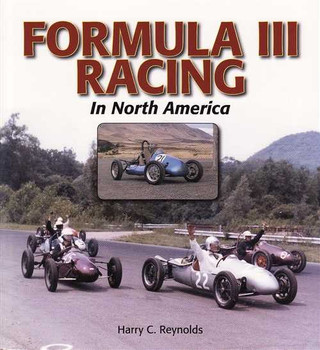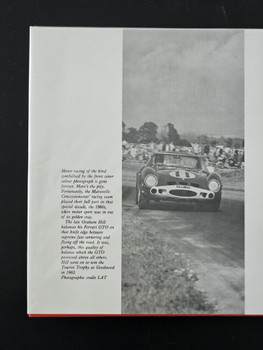Description
Along with a handful of other names such as Coca-Cola, Ferrari is the very definition of a brand. By some metrics it is the world’s most powerful brand. The Prancing Horse emblem is recognized the world over even by people who have never seen one in the flesh. Indeed, the term is so ubiquitous that many of the uninitiated will simply refer to any exotic-looking sports car as a Ferrari.
How did that come to be? Was this the product of a slick Madison Avenue campaign? No. In fact, as former CEO Luca Cordero di Montezemolo proudly notes, Ferrari has never purchased a single advert. Was there a single event that turned our attention to Ferrari? No. Instead it was a very organic method by which one out of a handful of the new, small-scale, post–World War II European specialty constructors came to survive and then thrive. That is not to imply that the Darwinian selection process was all happenstance. There was plenty of human agency. Much has been written about the guiding hand of Enzo Ferrari, the brilliance of the engineers, the relationships with superlative coachwork designers, and the versatility of the racing-team management. The conversion of these features into a car that is desirable to just the right clientele required its own skill set. That particular insight was provided by Luigi Chinetti.
Chinetti saw the opportunity from a unique perch of knowledge acquired from both sides of the Atlantic. He had gained technical knowledge from Alfa Romeo back in his native Italy. Fleeing the Mussolini regime, he settled in with a group of fellow expats in Paris where he both refined his business acumen and embarked on a successful racing career. What only in retrospect seems fortuitous, Chinetti was stranded in New York when the Nazis occupied Paris. He would in due course become an American citizen, and along the way cultivate relationships among elite sportsmen and technicians involved in the burgeoning sports-car culture of the New World.
Next, Chinetti performed an act of midwifery for Ferrari, driving the fledgling firm’s first great build, the 166, to victories at Le Mans and Spa. It immediately put Ferrari on the map in Europe, as well as among the cognoscenti of America. The postwar prosperity of America created a latent demand for the types of cars that many GIs had seen while in Europe. Apart from enterprising hot-rodders, there were no domestic products to choose from. European constructors, struggling under their battered conditions, began to appreciate the value of the American market. The British were the first. Through the cheaper MG and the more elegant Jaguar, they quickly understood the concept of “export or perish.”
The two great high-performance Italian manufacturers, Lancia and Alfa Romeo, came to release their first postwar products, the Aurelia and the 1900, respectively. Both were geared toward the European milieu. They were harbingers of a new and important class of car, the dual-purpose Gran Turismo. It was a slice of the sports-car pie that in due course would be competitively dominated by Ferrari, thanks in no small part to Luigi Chinetti.
It took Chinetti to remind the Italians that their future lay across the ocean. Enzo Ferrari’s independent streak of breaking free from Alfa Romeo and establishing his own series of companies perhaps made him more receptive to innovation. In any case, Chinetti met with Ferrari during the former’s first postwar visit to Europe. The exact nature of that meeting is somewhat shrouded in the mists of time, but its eventual outcome is clear. Once Ferrari began to build cars, Chinetti became responsible for importing them to the United States. He understood the key elements of the American client base that Europeans easily overlook. It is a populous and vast country, and it is critical to establish bridgeheads on both coasts. American tastes and practices both on the road and the track were different than those of the Old World.
The European market for racing and sports cars tended to be along a spectrum ranging from those fully invested in competition to those less so. American palettes tended to bifurcate between people engaged in competition and those for whom the sports car was a form of pleasurable and exhibitionist transportation. Chinetti coached Ferrari into meeting some of these demands. The communication was not always smooth. There were often problems in the pipeline. Many could be attributed to uneven build quality, metallurgical issues, and the volatility of Italian labor.
Chinetti did not merely persevere—he unabashedly thrived during the heady 1950s. Ferrari dominated in American racing. The name and the photos appeared in every enthusiast magazine. In the era before mass TV sports, SCCA and other road-racing series in the United States had extensive spectator attendance. Word about the prowess of the sleek red cars spread quickly.
Chinetti’s intimate experience with racing led to the creation of NART, the North American Racing Team. From late 1957 through 1982, it became the most recognizable face of Ferrari to most in the United States. At Le Mans, NART, along with Belgian Jacques Swaters and his Écurie Francorchamps, were the principal privateer Ferraris in the great 24-hour race. The role of these private teams, especially NART, was critical for the racing success of Ferrari; witness the NART win at Le Mans in 1965, the last Ferrari outright victory for almost 60 years.
Luigi Chinetti shared an important characteristic with Enzo Ferrari—a presence. Neither was physically overpowering, but when they walked in, the room came to attention. By the mid-1960s, informality had taken a strong hold in American culture. Employees increasingly came to be on a first-name basis with their superiors. Luigi Chinetti Jr. was coming of age during this period, and most called him by his family nickname, “Coco.” But to one and all, regardless of their stature, his father would always be Mr. Chinetti.
It was this aura that made the deals and attracted talented people to work for him. Indeed, between his charisma and the addictive nature of motor racing, Chinetti—excuse me, Mr. Chinetti—was able to assemble a volunteer group par excellenceamong pit crews. Mechanics were usually not paid for their time at race tracks, and customers would regularly show up to help the team. Given the vagaries of the Ferrari product, relations with customers could be mercurial; but also, given the ever-growing prestige of the brand of Ferrari coupled with his poise, Chinetti was able to attract a cream of clients who in equal measure were highly accomplished in diverse fields as well as often exhibiting the quirky nature associated with a finicky thoroughbred of a sports car.
Given their oversize personalities, it is no surprise that Chinetti and Ferrari were often at loggerheads. Later, as Ferrari, the man, had a lesser role in Ferrari, the company, the relationship with the original American importer became more diffuse. While NART as an active entity faded, and on August 17, 1994, we lost its leader, the preceding four decades marked an apogee for Ferrari, not only in American racing, but in the American psyche as well. It is all thanks to NART and Mr. Chinetti, and this is their story.
Additional Information
Condition Sync Code: |
1000 |
Book Title: |
Ferrari in America - Luigi Chinetti and the North American Racing Team |
Language: |
English |
Format: |
Hardcover |
Publication Year: |
2024 |
Pages: |
420 |
Author: |
Michael Lynch |
Sync Category Code: |
261186 |


























